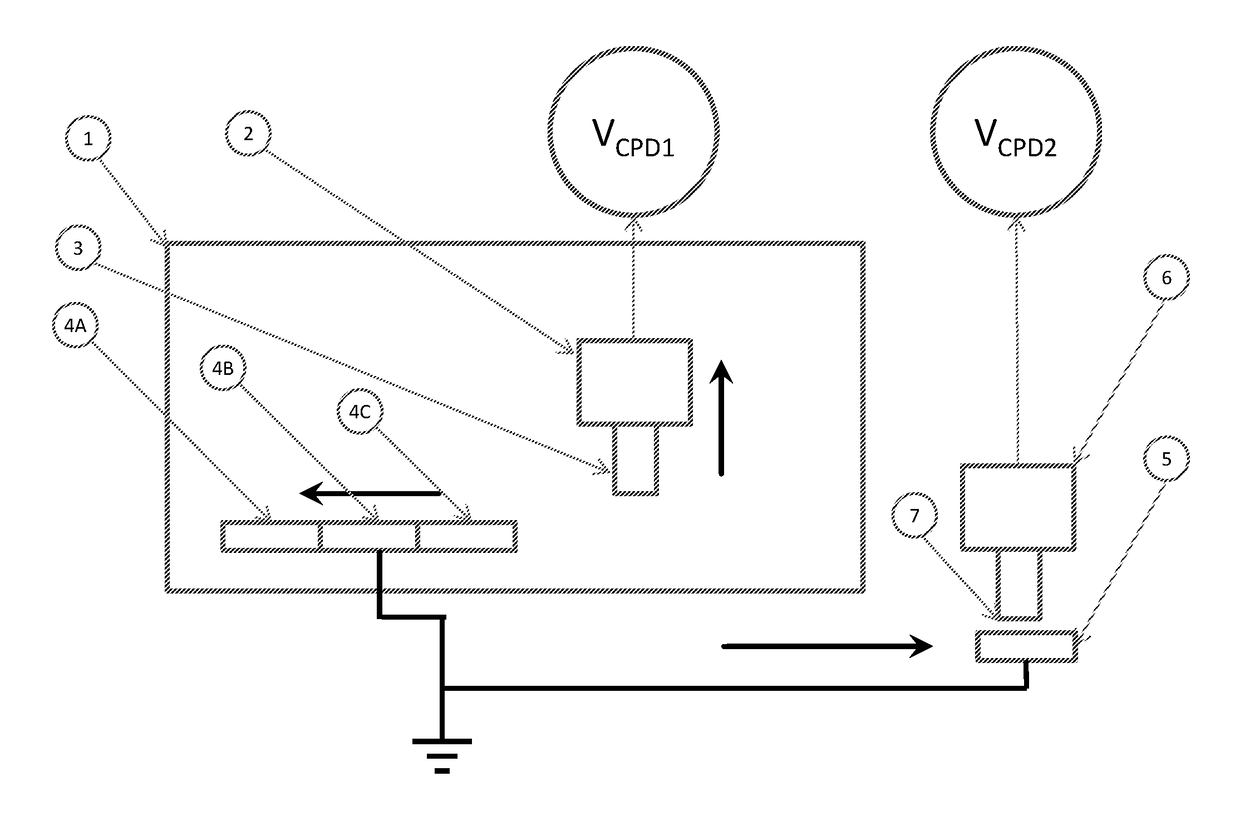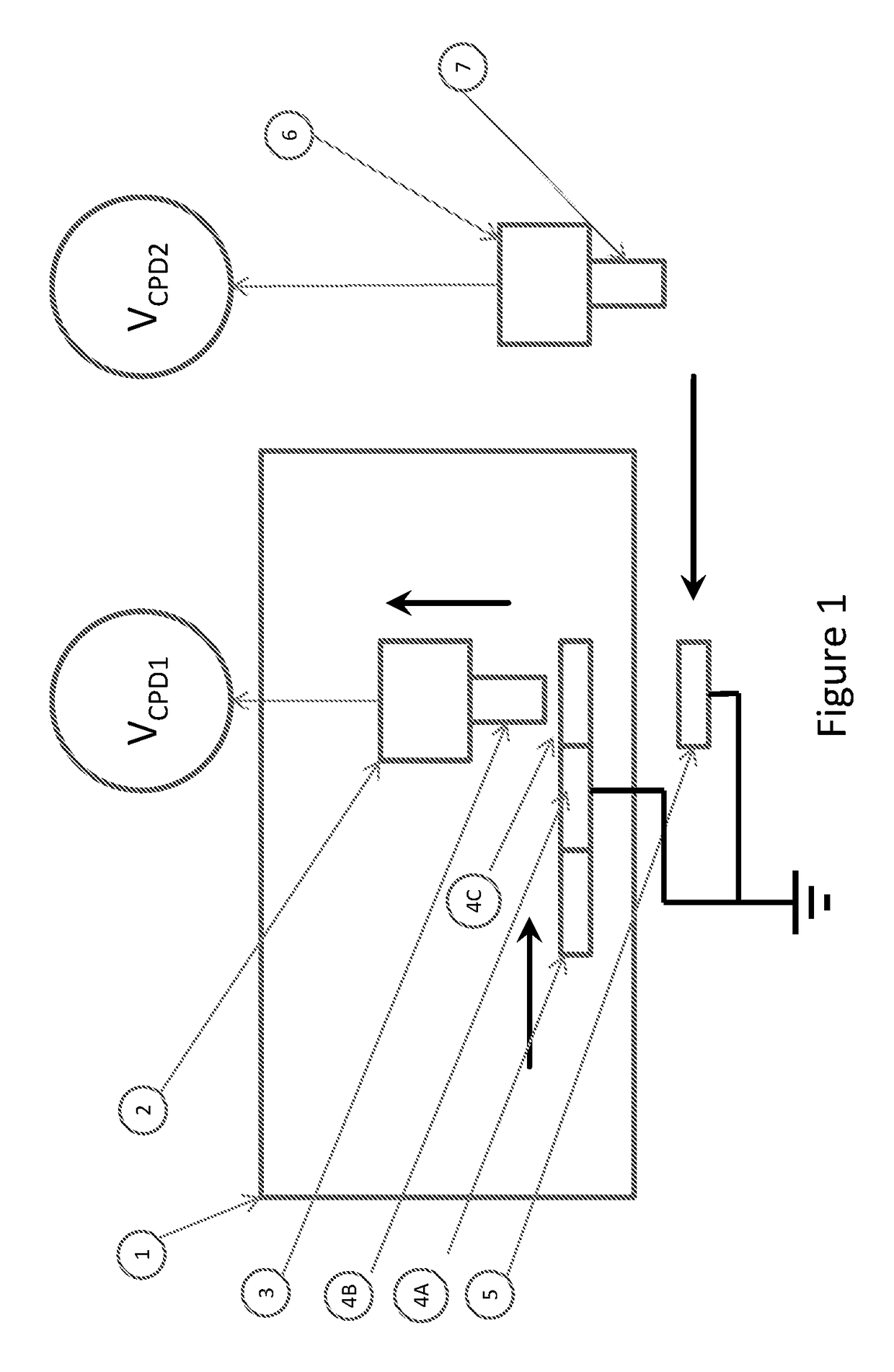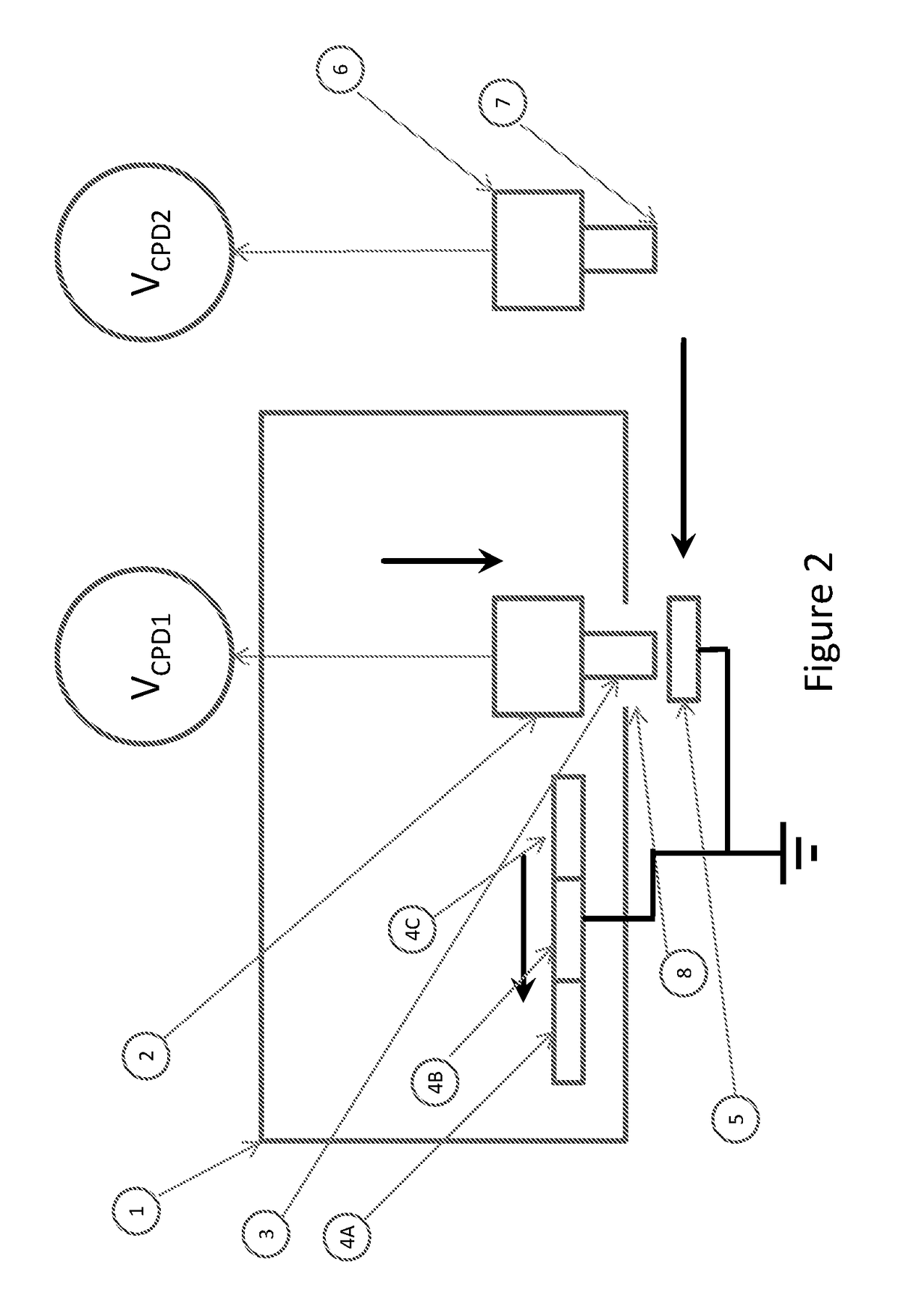[0018]The system and methods described in this invention readily provide an enhanced application of a noncontact voltage sensor for making accurate and repeatable measurements of the electrical potential, or work function, of surfaces. The invention includes an enhanced capability for measuring and monitoring the surface potential of a noncontact voltage sensor probe tip. It also provides the ability to independently detect changes in the electrical potentials of the noncontact voltage sensor probe tip and various reference surfaces over time. The ability to accurately determine the surface potential of the noncontact voltage sensor probe tip allows the sensor to be used to measure the absolute potentials of other surfaces. This capability is useful for detecting changes in surface condition, including changes that result from surface contamination, charging of dielectric films on the surface, or changes in the work functions of films that may affect the performance of microelectronic devices.
[0021]The controlled environment can take many different forms. A typical controlled environment would include an enclosure with controls for maintaining one or more constant environmental characteristics such as temperature, humidity, cleanliness, and illumination. All of these factors have been shown to influence surface work function. The controlled environment could also include the ability to purge the area around the reference surfaces and reference probe tip with specific gasses, or to create a full or partial vacuum around the reference surfaces and reference probe tip. Gasses can be chosen to minimize potential chemical reactions between the environment and reference surfaces and reference probe tip. Filters can be used to process the atmosphere in the controlled environment to reduce particulates or remove organic or other contaminants. The controlled environment can include one or more of the above controls alone or in combination.
[0022]The important innovation of this invention is the inclusion of both reference surfaces and a reference noncontact voltage sensor probe tip in a controlled environment. The use of a reference probe tip provides two important benefits. The first benefit is that the actual reference surfaces do not need to be removed from the controlled environment in order to perform CPD measurements on them. Removing the reference surfaces from the controlled environment would expose the surfaces to a new environment. This could cause surface chemical reactions or adsorption that may cause the work functions and surface potentials of the surfaces to change. Once the surface is disturbed, the surface condition and surface potential could continue to change over a period of minutes, hours or even days. Maintaining reference surfaces with stable surface potentials is critical to the accurate monitoring of the nonreference noncontact voltage sensor probe tip work function, which is one of the purposes of this invention. Of course removing the reference sensor probe tip from the controlled environment may cause the work function and surface potential of the reference sensor probe tip to change. However, these changes tend to occur slowly over a period of minutes. As long as the surface potential of the reference sensor probe tip is stable over the time between CPD measurements on the reference surfaces in the controlled environment and the nonreference surface outside of the controlled environment, then the relative surface potentials of the reference and nonreference surfaces can be determined accurately. This time between CPD measurements inside and outside of the controlled environment is typically less than one minute. If the surface potential of the reference sensor probe tip changes slowly between subsequent calibrations, this will have no effect on the accuracy of the calibrations because the surface potential of the nonreference voltage sensor probe tip is always calibrated relative to the stable work functions of the reference surfaces.
[0023]The second benefit of using a reference noncontact voltage sensor is that it allows the CPD to be determined separately between the reference sensor probe tip and 1) the reference surfaces in the controlled environment, and 2) the nonreference noncontact voltage sensor probe tip. If the nonreference noncontact voltage sensor probe tip is used to directly measure the CPD of the reference surfaces, any change in the CPD value could be the result of a change in surface potential of the nonreference sensor probe tip, the reference surfaces, or both. There is no way to know for sure which surface is changing. The use of a reference noncontact voltage sensor allows independent CPD measurements that can be used to help identify the source of any change in CPD between the nonreference sensor probe tip and reference surfaces. For example, if the CPD between a reference surface and the reference sensor probe tip is stable over multiple measurements, but the CPD between the reference sensor probe tip and the nonreference sensor probe tip changes, then the change can be attributed to a change in the surface potential of the nonreference sensor probe tip. This is the most common situation because the nonreference sensor probe tip operates in an uncontrolled environment. If the surface potential of the nonreference noncontact voltage sensor probe tip changes, then the new surface potential of the nonreference sensor probe tip can be recalculated based on the CPD between the nonreference noncontact voltage sensor probe tip and a reference surface with stable surface potential. However, if the CPD between the reference sensor probe tip and a reference surface changes, but the CPD between the reference sensor probe tip and the nonreference sensor probe tip is stable, this could indicate a change in the surface potential of the reference surface, and would require recalibrating all surface potentials using a reference surface with a known surface potential, such as an electrolyte solution in contact with a liquid electrochemical half cell.
 Login to View More
Login to View More  Login to View More
Login to View More 


